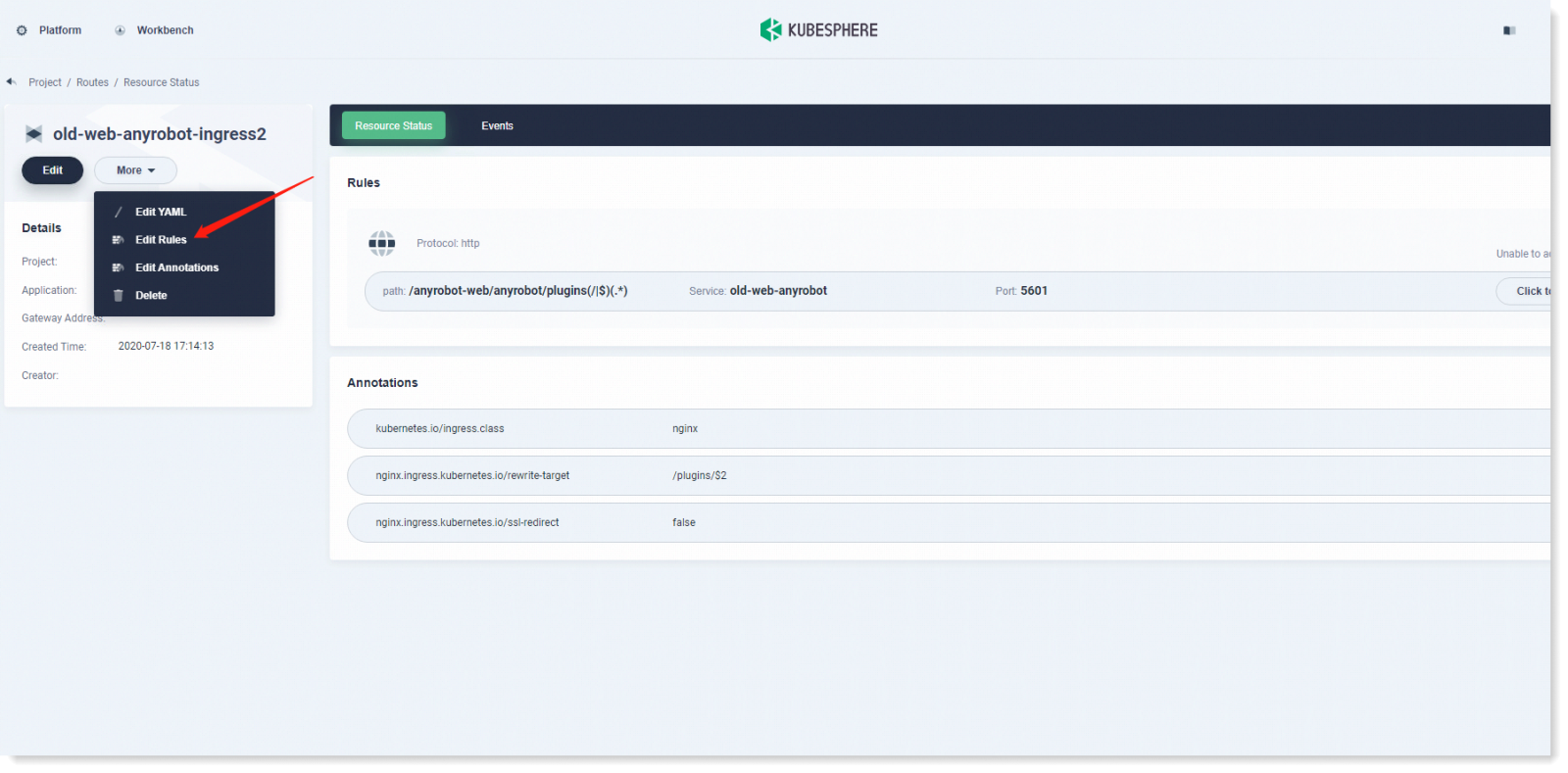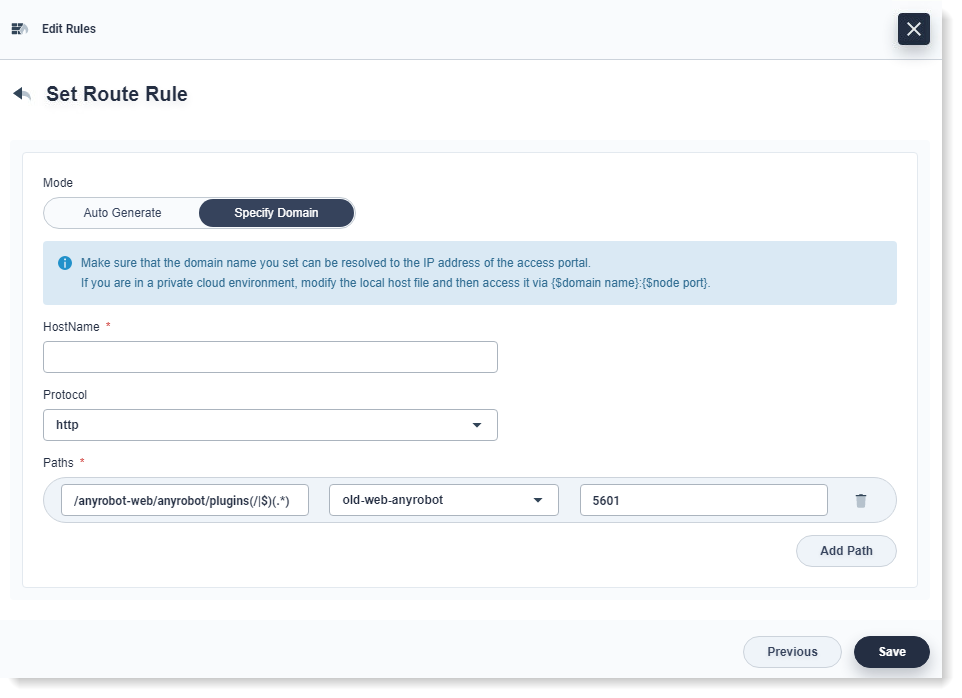Updated at: 2022-12-09 03:49:50
Ingress is the way to aggregate services in the cluster, corresponding to the Ingress resource of Kubernetes. Nginx Controller is used at backend to process specific rules. Ingress can provide the service with URL for access outside the cluster, load balancing, SSL termination, HTTP route, etc.
This section describes the rules and parameters that need to be set when creating Ingress. To create Ingress with the https protocol, make sure that the https documentation has been created in advance.
Select the corresponding route to for the route details and click Learn More to modify the rules and annotations of the route. The route rules are as follows:


► HostName: The access domain name for the rule, and which will be used to access the corresponding services. If the access entry is enabled by NodePort, you need to ensure that the Host on the client can be correctly parsed to the cluster node; if the access entry is enabled by LoadBalancer, you need to ensure that the Host is correctly parsed to the IP of the load balancer;
► Protocol: It supports HTTP and HTTPS:
• HTTP: A Host configuration item (domain name) and a Path list, each Path is associated with a backend service. All inbound requests must be matched with Host and Path before traffic is forwarded to the backend by LoadBalancer.
• HTTPS: In addition to the configuration in http, secret is also required. In the secret, you can specify that the TLS secret and certificate must be included to encrypt Ingress, and the TLS secret must include tls.crt and tls.key.
► Paths: The paths for rules and the corresponding backend services. The port needs to be filled in with the port of services.
This section describes the rules and parameters that need to be set when creating Ingress. To create Ingress with the https protocol, make sure that the https documentation has been created in advance.
Select the corresponding route to for the route details and click Learn More to modify the rules and annotations of the route. The route rules are as follows:


► HostName: The access domain name for the rule, and which will be used to access the corresponding services. If the access entry is enabled by NodePort, you need to ensure that the Host on the client can be correctly parsed to the cluster node; if the access entry is enabled by LoadBalancer, you need to ensure that the Host is correctly parsed to the IP of the load balancer;
► Protocol: It supports HTTP and HTTPS:
• HTTP: A Host configuration item (domain name) and a Path list, each Path is associated with a backend service. All inbound requests must be matched with Host and Path before traffic is forwarded to the backend by LoadBalancer.
• HTTPS: In addition to the configuration in http, secret is also required. In the secret, you can specify that the TLS secret and certificate must be included to encrypt Ingress, and the TLS secret must include tls.crt and tls.key.
► Paths: The paths for rules and the corresponding backend services. The port needs to be filled in with the port of services.
< Previous:
Next: >

















